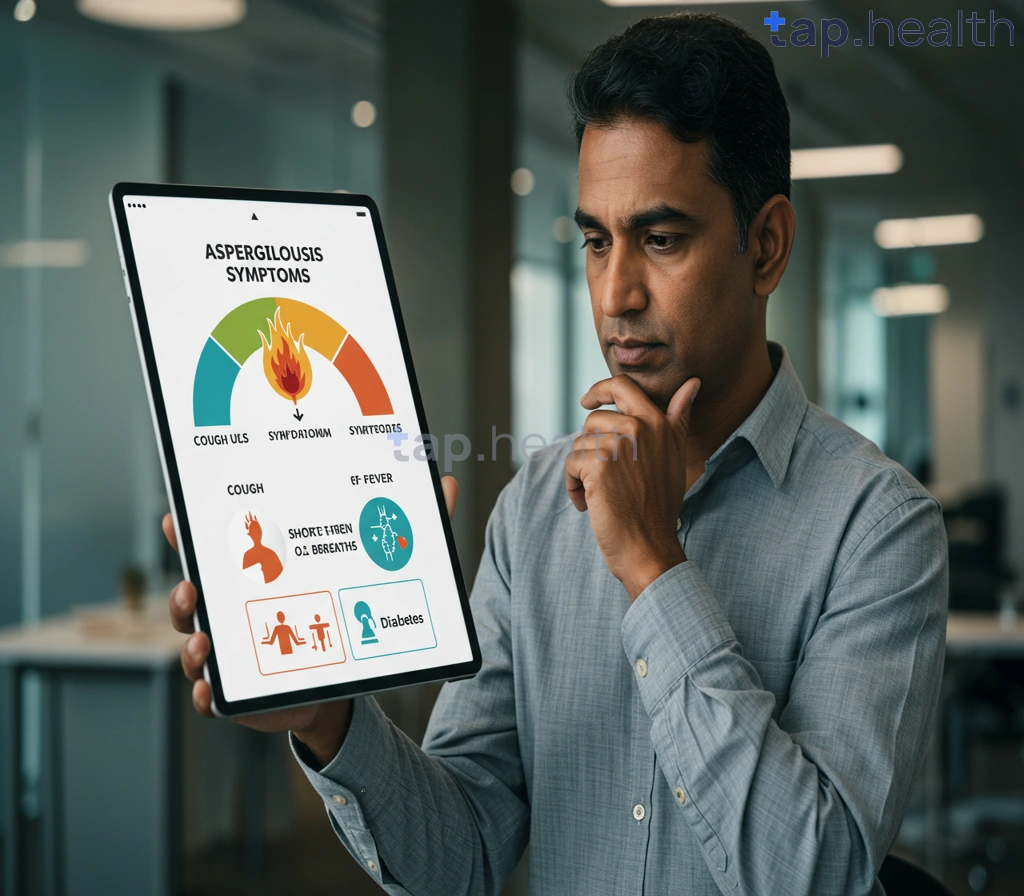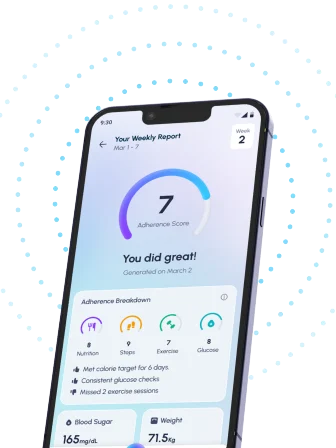Table of Contents
- Understanding Aspergillosis Risk in Diabetics
- Aspergillosis Symptoms: Recognizing the Signs in Diabetics
- Diabetes and Aspergillosis: A Comprehensive Guide
- Are You at Risk? Aspergillosis and Diabetes
- Preventing Aspergillosis: Tips for People with Diabetes
- Frequently Asked Questions
- References
Living with diabetes often means navigating a complex landscape of health concerns. While managing blood sugar is paramount, it’s crucial to understand the potential for other complications, some less widely known than others. This blog post focuses on understanding aspergillosis in people with diabetes: symptoms and risk factors. We’ll explore why individuals with diabetes are at increased risk of this fungal infection and what signs you should watch out for. Learning about aspergillosis is a vital step in proactive health management, allowing for early detection and treatment. Let’s delve into the details and empower you with knowledge.
Understanding Aspergillosis Risk in Diabetics
Increased Susceptibility in Tropical Climates
Diabetes significantly increases the risk of aspergillosis, a fungal infection caused by Aspergillus molds prevalent in warm, humid environments common across India and other tropical countries. This heightened vulnerability stems from several factors. Diabetics often have weakened immune systems, making them less able to fight off infections. Poorly controlled blood sugar levels further compromise their defenses. Additionally, the prevalence of foot ulcers in diabetics—nearly 15% experience them in their lifetime—creates an entry point for Aspergillus spores, leading to potentially serious infections and even amputations. This risk is particularly amplified in tropical regions with high humidity and abundant fungal spores.
Recognizing the Symptoms
Symptoms of aspergillosis can vary depending on the type and location of the infection. Common signs include persistent cough, fever, shortness of breath, and chest pain. However, in diabetic patients, the infection may manifest as a worsening of existing foot ulcers, exhibiting increased inflammation, pain, and discharge. Early detection is crucial, as aspergillosis can rapidly progress, especially in individuals with compromised immune systems. Prompt medical attention is essential.
Protecting Yourself in High-Risk Environments
Individuals with diabetes living in India and other tropical countries should take proactive steps to minimize their risk of aspergillosis. This includes diligently managing blood sugar levels, practicing meticulous foot hygiene to prevent ulcers, and seeking immediate medical care for any suspected infection. Being aware of your surroundings and avoiding areas with high concentrations of dust and mold is also vital. Regular check-ups with your doctor are crucial for early detection and prompt treatment, significantly improving your chances of a positive outcome. It’s also important to understand how other health factors can impact your condition. For example, learn more about how medication, such as antibiotics, can affect diabetics by reading our article, Can Diabetics Take Antibiotics?. Managing your blood sugar effectively is crucial, and understanding how external factors like heat can affect your health is also important. You can find more information in our article, How Does Heat Affect Diabetics?.
Aspergillosis Symptoms: Recognizing the Signs in Diabetics
Understanding the Increased Risk
Diabetes significantly increases the risk of developing aspergillosis, a fungal infection affecting the lungs and other organs. This is particularly concerning given that globally, 50% of diabetes cases remain undiagnosed, according to the IDF Diabetes Atlas. This means a large portion of the population in India and other tropical countries, where diabetes prevalence is high, may be unknowingly vulnerable. Diabetic individuals often have weakened immune systems, making them more susceptible to opportunistic infections like aspergillosis. This vulnerability is heightened in regions with warm, humid climates prevalent in many parts of India and other tropical nations, creating ideal conditions for fungal growth.
Recognizing the Symptoms
Symptoms of aspergillosis can mimic other respiratory illnesses, making early diagnosis challenging. In diabetics, these symptoms might be more subtle or masked by existing health conditions. Common signs include a persistent cough, shortness of breath, chest pain, fever, and fatigue. However, be aware that severe symptoms like coughing up blood or significant weight loss warrant immediate medical attention. In tropical climates, the presentation might differ slightly due to co-existing infections or environmental factors. It’s crucial to consult a doctor if you experience these symptoms, especially if you have diabetes. Understanding the early signs of diabetes is also crucial for prevention; you can learn more about 10 Early Signs and Symptoms of Diabetes?
Seeking Timely Medical Care
Early diagnosis and treatment are crucial for managing aspergillosis. Given the high rates of undiagnosed diabetes, particularly in India and tropical countries, regular check-ups and proactive health management are vital. If you have diabetes, discuss your risk of aspergillosis with your doctor and ensure you receive appropriate preventative care and regular screenings. Prompt intervention can significantly improve outcomes and prevent serious complications. It’s important to note that while this article focuses on aspergillosis in diabetics, other conditions can also impact blood sugar levels. For example, it is important to understand whether conditions such as meningitis can cause diabetes.
Diabetes and Aspergillosis: A Comprehensive Guide
Aspergillosis, a fungal infection caused by *Aspergillus* mold, poses a significant threat to individuals with diabetes, particularly in India and other tropical countries. This is especially concerning given that a substantial portion of the global diabetic population, 61% of whom are aged between 20-64 years and 39% aged 65+ years, according to the International Diabetes Federation, resides in these regions. Understanding the increased risk and recognizing the symptoms is crucial for early diagnosis and effective treatment.
Increased Risk Factors in Tropical Climates
The prevalence of aspergillosis in diabetic individuals is heightened in hot, humid climates like those prevalent across India and many tropical nations. High humidity fosters *Aspergillus* mold growth, increasing exposure. Additionally, weakened immune systems often associated with poorly managed diabetes, coupled with environmental factors, create an ideal breeding ground for infection. Aspergillus species are ubiquitous in the environment and can be inhaled, leading to various forms of aspergillosis, ranging from relatively mild allergic reactions to life-threatening invasive infections.
Recognizing the Symptoms
Symptoms of aspergillosis can be subtle and easily mistaken for other respiratory illnesses, particularly in those with underlying diabetes. Common indicators include persistent cough, shortness of breath, fever, and chest pain. Invasive aspergillosis, a more severe form, may present with additional symptoms like weight loss, fatigue, and night sweats. Early recognition and prompt medical attention are vital for improving treatment outcomes. Regular checkups with healthcare professionals and proactive management of blood sugar levels are essential preventative measures. Understanding the underlying causes of diabetes can also be helpful; you might find our article on Is Diabetes Caused by a Virus or Bacteria? informative.
Seeking Medical Help in India and Tropical Regions
If you experience any of these symptoms, especially if you have diabetes and live in India or a tropical country, seek immediate medical attention. Early diagnosis through tests like chest X-rays and blood cultures is crucial. Access to appropriate antifungal medications and medical expertise is vital for managing this serious infection. Don’t delay seeking help; early intervention significantly improves the chances of a positive outcome. For those planning travel, maintaining good health management is key, and we recommend reading our tips on Traveling with Diabetes: Essential Tips for a Safe & Healthy Journey before your next trip.
Are You at Risk? Aspergillosis and Diabetes
Diabetes significantly increases your susceptibility to aspergillosis, a fungal infection affecting the lungs and other organs. This risk is heightened in tropical and subtropical climates like those prevalent across India and other parts of Southeast Asia, where Aspergillus fungi thrive. The damp, humid conditions common in these regions create an ideal breeding ground for the fungus.
Understanding the Increased Risk
People with diabetes often have weakened immune systems, making them more vulnerable to opportunistic infections like aspergillosis. High blood sugar levels can impair immune cell function, hindering the body’s ability to fight off fungal invaders. Furthermore, studies show a strong correlation between poorly controlled blood sugar and severe aspergillosis cases. This is particularly concerning given that research indicates children born to mothers with gestational diabetes are 7x more likely to develop Type 2 diabetes later in life, potentially increasing their lifetime risk of aspergillosis. Understanding the complexities of diabetes is crucial, and you might find our article on Does Diabetes Cause Cancer? informative.
Recognizing the Symptoms
Symptoms of aspergillosis can mimic other respiratory illnesses, making early diagnosis crucial. Common symptoms include persistent cough, shortness of breath, fever, and chest pain. However, aspergillosis can also manifest in more severe forms, impacting other organs. Prompt medical attention is vital if you experience these symptoms, especially if you have diabetes.
Protecting Yourself in High-Risk Regions
In India and other tropical countries, proactive measures are essential. Maintaining strict blood sugar control through diet, exercise, and medication is paramount. Additionally, avoiding areas with high levels of dust and mold spores can help minimize exposure to Aspergillus. Consult your doctor for regular checkups and discuss any concerns regarding aspergillosis, particularly if you have a history of diabetes or live in a high-risk environment. Early detection and treatment significantly improve the prognosis. It’s also important to dispel common myths; for instance, Is Diabetes Contagious Sexually? is a question many people have.
Preventing Aspergillosis: Tips for People with Diabetes
Managing Blood Sugar for Reduced Risk
Maintaining healthy blood sugar levels is crucial in preventing aspergillosis, especially for individuals with diabetes. High blood sugar weakens the immune system, making individuals more susceptible to fungal infections like aspergillosis. Strict adherence to your diabetes management plan, including medication, diet, and exercise, is paramount. Regular blood glucose monitoring helps in keeping your blood sugar within the recommended range, thus strengthening your body’s natural defenses. Remember, up to 80% of Type 2 diabetes cases can be delayed or prevented through lifestyle changes, as highlighted by research. This emphasizes the importance of proactive health management. Learning how to prevent long-term complications of diabetes is also crucial for overall well-being.
Environmental Precautions in Tropical Climates
Individuals in India and other tropical countries face heightened aspergillosis risk due to environmental factors. Mould spores are prevalent in humid and warm climates, so minimizing exposure is key. This includes avoiding damp areas, using air purifiers with HEPA filters, and ensuring proper ventilation in your home. Regular cleaning, particularly in areas prone to mould growth like bathrooms and kitchens, is also important. Wearing a mask when cleaning or working outdoors can also significantly reduce your exposure to spores.
Boosting Immunity Naturally
Strengthening your immune system through healthy lifestyle choices is vital. This involves eating a balanced diet rich in fruits, vegetables, and whole grains. Regular exercise, adequate sleep, and stress management techniques can also contribute significantly to a robust immune system, providing better protection against aspergillosis and other infections. Consulting a doctor or a qualified healthcare professional for personalized advice on managing diabetes and boosting immunity is always recommended. Taking proactive steps towards better health is particularly crucial in high-risk environments. For more tips on boosting immunity while managing diabetes, check out our related article.
Frequently Asked Questions
Q1. What is aspergillosis, and why are people with diabetes at higher risk?
Aspergillosis is a fungal infection caused by *Aspergillus* mold. People with diabetes are at increased risk because they often have weakened immune systems and may develop foot ulcers, providing easy entry points for the fungus.
Q2. What are the common symptoms of aspergillosis in diabetics?
Symptoms can include cough, fever, shortness of breath, chest pain, and worsening foot ulcers. It’s crucial to seek medical attention if you experience any of these, especially if you have diabetes.
Q3. How can I reduce my risk of developing aspergillosis if I have diabetes?
Managing your blood sugar levels effectively, maintaining meticulous foot hygiene, and avoiding dusty or moldy environments are key preventative measures. Regular checkups with your doctor are also vital.
Q4. Where is aspergillosis more common, and why?
Aspergillosis is more prevalent in tropical climates with high humidity, such as India, because *Aspergillus* spores are abundant in these regions.
Q5. What is the importance of early diagnosis and treatment for aspergillosis?
Early diagnosis is crucial for effective treatment and a better outcome. Prompt medical attention is vital, particularly for people with diabetes who are at higher risk.
References
- A Practical Guide to Integrated Type 2 Diabetes Care: https://www.hse.ie/eng/services/list/2/primarycare/east-coast-diabetes-service/management-of-type-2-diabetes/diabetes-and-pregnancy/icgp-guide-to-integrated-type-2.pdf
- What is Diabetes: https://www.medschool.lsuhsc.edu/genetics/docs/DIABETES.pdf




